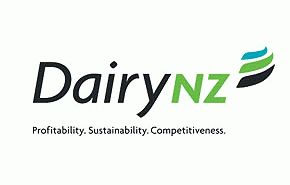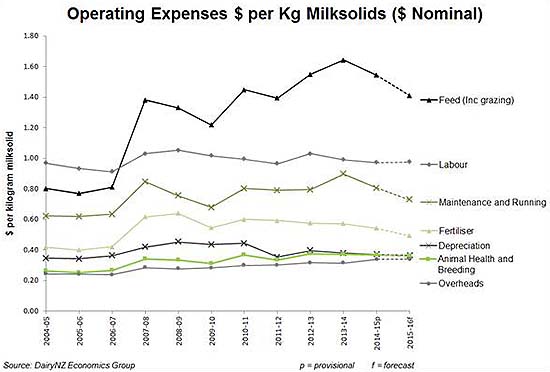
Content supplied by DairyNZ
Analysis undertaken by the DairyNZ Economics Group is pointing to at least a two to three percent drop in New Zealand’s milk production this season as farmers tighten the focus on improving the efficiency of their farming systems.
DairyNZ senior economist Matthew Newman says the official Ministry for Primary Industries cull cow figures show that farmers reduced cow numbers earlier than normal last season. “This looks likely to continue this season in response to low milk prices,” he says.
“Fewer cows along with less supplement use will inevitably mean less milk is produced and processed, and so we are at this point in the season forecasting a drop of about two to three percent.
“We’re picking up the signals that our 14,000 levy-paying dairy farmers are intensely focussed on how to achieve cost-efficient production this season. They are removing any unnecessary costs that will reduce the need to increase their debt and help minimise their losses. The number of cows going to meat processors is up 21 percent, more than 185,000 on last year (to the end of May). That’s a very high level for the industry. Given this increase and the impact that will have on cow numbers, we don’t expect to see herd sizes increase this season across the country.
“The big question still hanging over the season is what the El Nino weather pattern brings in terms of the climatic conditions for farmers for late spring, summer and then autumn. We have had a cold July and that hasn’t helped grass growth. If we get dry conditions this summer, production could drop further.
“However, it is difficult to predict as last year’s dry weather was followed by a good autumn and production really bounced back quite quickly, with milk supply up more than three percent at the end of last season. The seasonal conditions we are going to face going forward are unknown but it’s likely that production will be down this year. We’re just not certain by exactly how much at this stage,” says Matthew.
“We know feed is a big cost for farmers, and they will also be looking to delay non-urgent repairs and maintenance, cut their fertiliser spend and any unprofitable supplementary feed. They are looking for any other efficiency gains they can get right now as they face the possibility of the lowest milk price since the early 2000s. The likely drop in the Fonterra Farmgate Milk Price this week will impact on the retrospective milk payments next winter and spring, so we will also see a continuing effect on farmers going forward,” he says.
“Repairs and maintenance, fertiliser and supplementary feed costs make up about half of a farmer’s working business expenses. These are big cost items that are historically linked to the ups and downs of milk price. So when milk price goes down, we will generally see these cost areas reduce,” says Matthew.





We welcome your comments below. If you are not already registered, please register to comment.
Remember we welcome robust, respectful and insightful debate. We don't welcome abusive or defamatory comments and will de-register those repeatedly making such comments. Our current comment policy is here.